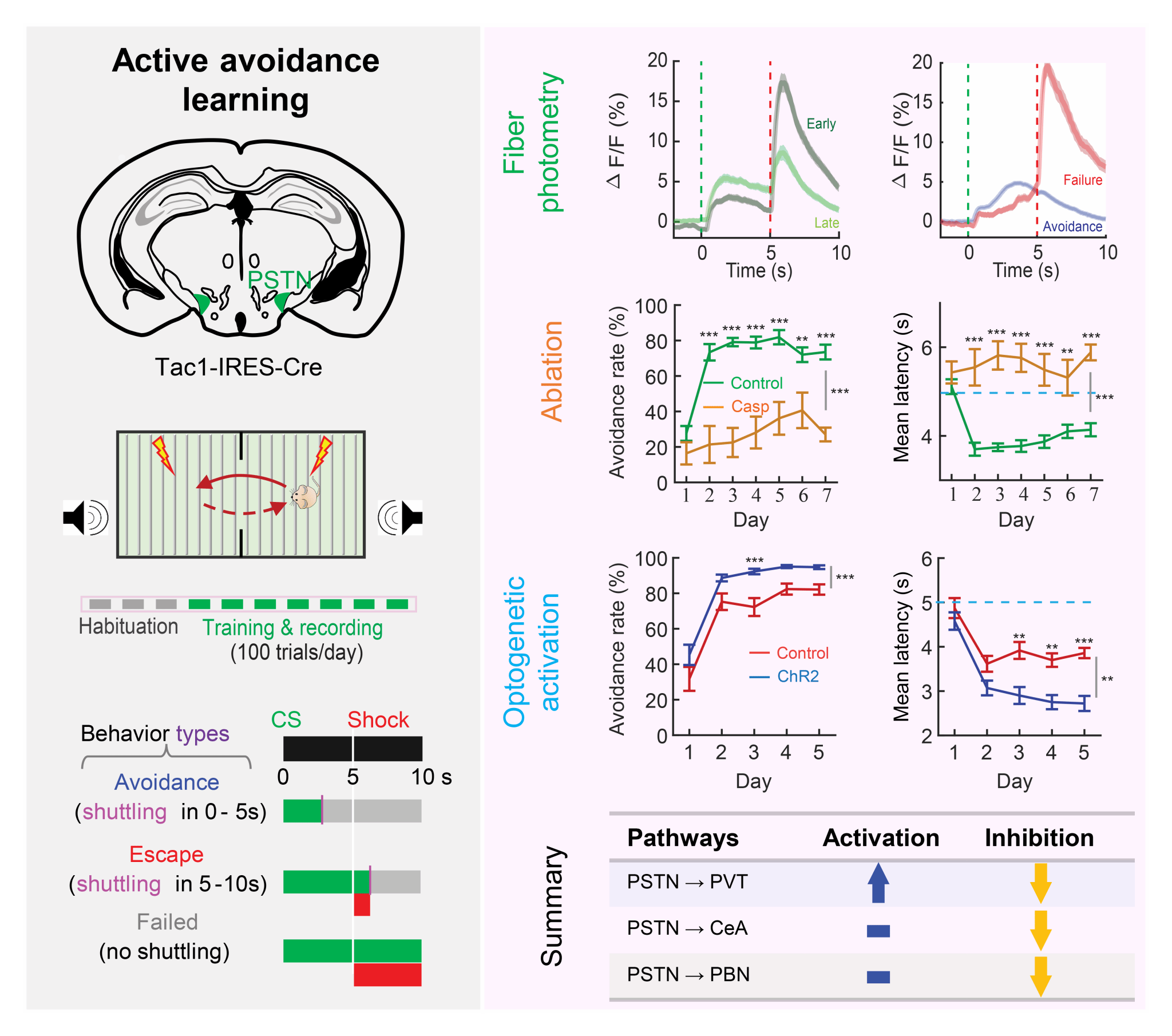
The research titled "Tachykinin1-expressing neurons in the parasubthalamic nucleus control active avoidance learning" was published online in eLife on December 18, 2024. Active avoidance is a type of instrumental behavior that requires an organism actively to engage in specific actions to avoid or escape from a potentially aversive stimulus and is crucial for the survival and well-being of organisms. It requires a widely distributed, hard-wired neural circuits spanning multiple brain regions, including the amygdala and thalamus. However, less is known about whether and how the hypothalamus encodes and controls active avoidance learning. This study identified a previously unknown role for the parasubthalamic nucleus (PSTN), located in the lateral subdivision of the posterior hypothalamus, in the encoding and control of active avoidance learning. Fiber photometry calcium imaging shows that the activity of tachykinin1-expressing PSTN (PSTNTac1) neurons progressively increases during this learning. Cell-type specific ablation and optogenetic inhibition of PSTNTac1 neurons attenuates active avoidance learning, whereas optogenetic activation of these cells promotes this learning via a negative motivational drive. Moreover, the PSTN mediates this learning differentially through its downstream targets. Together, this study identifies the PSTN as a new member of the neural networks involved in active avoidance learning and offers us potential implications for therapeutic interventions targeting anxiety disorders and other conditions involving maladaptive avoidance learning.